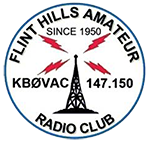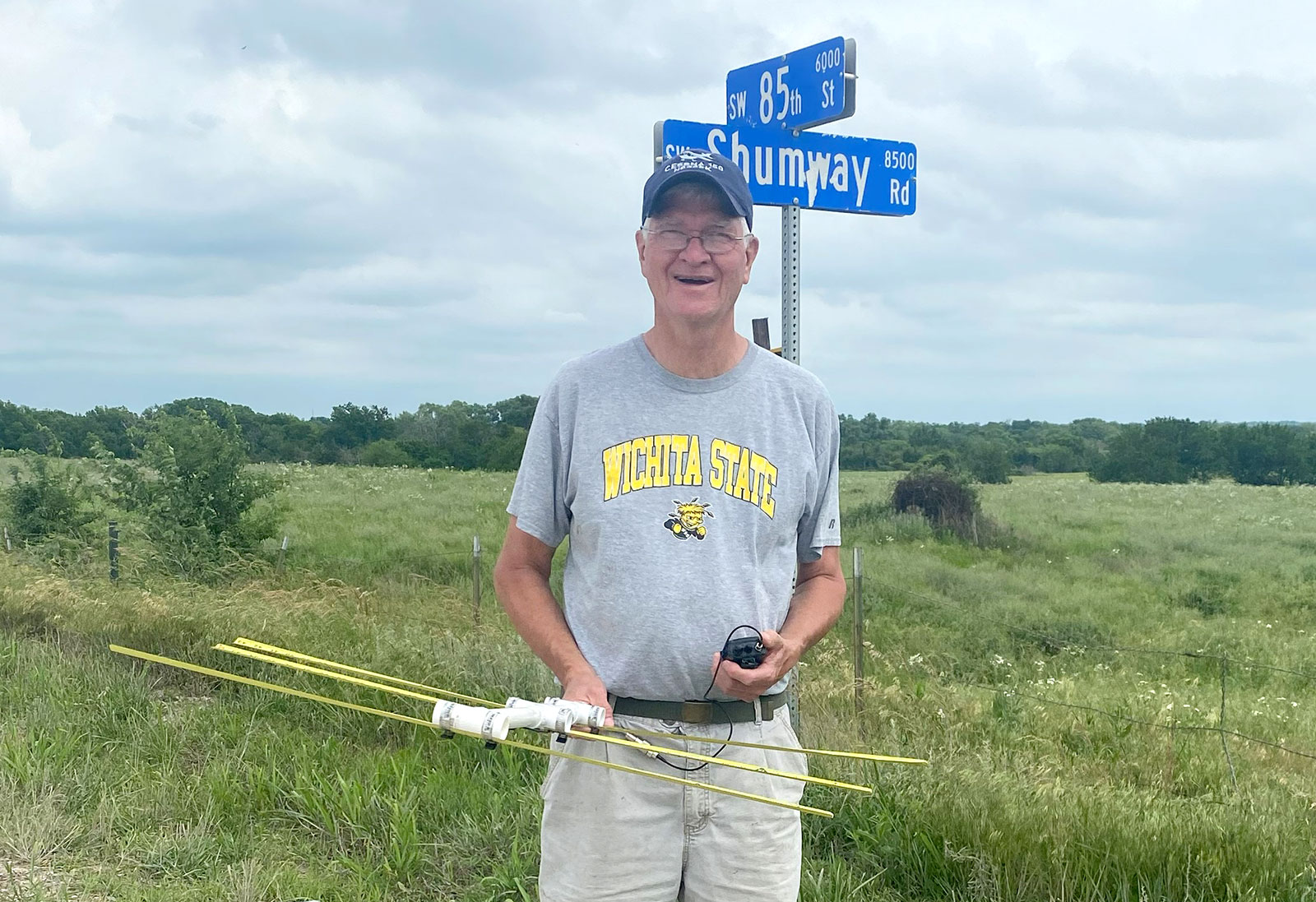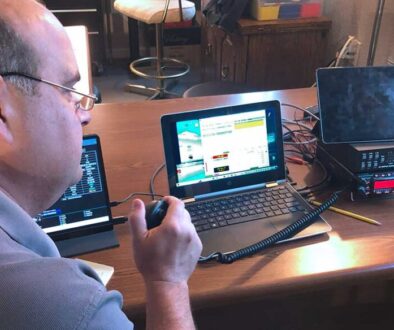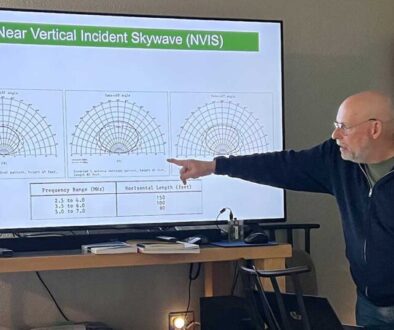Radio Direction Finding Training (aka Fox Hunt Training)
We met on June 2nd at the EOC in Augusta. The goal was to demo “Hunt Techniques” for Long Distance Transmitter Hunting.
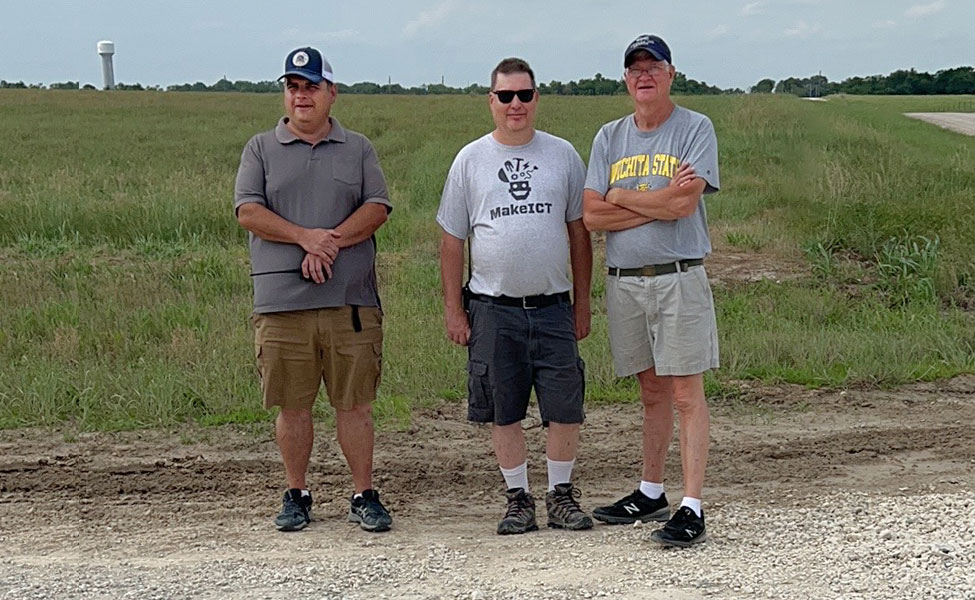
John, K0JDL chose the NOAA Weather Radio Station Antenna, WWH22 162.500 for this exercise. This antenna is located in Beaumont, KS. John, K0JDL and Steve, KD0IJP were great Elmers and shared their knowledge.
We met in the parking lot at the EOC in Augusta. Basically, we needed to determine the heading and the signal strength to the NOAA transmitter. We used our HTs (handheld radios) for this training exercise.
Barb, KD0WAU had both a Yaesu FT60 and a Baofeng. It was noted that the Baofeng doesn’t have a good signal strength indicator (s-meter). It is important to be tuned to the correct transmitter frequency. Barb had her HT tuned to the Wichita NOAA transmitter frequency instead of the Beaumont transmitter.
Barb also had a telescoping gain antenna on her Yaesu which is normally used to improve reception on a weak signal. This was not ideal as it did not allow her to pin point the heading of the signal. Steve, KD0IJP lent his Rubber Ducky Antenna in order to weaken the signal on her HT. The idea here is to be able to find the heading of the signal.
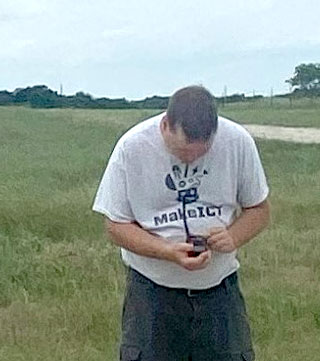 We used our bodies holding the HT horizontally to our chest. Steve said the NOAA antenna was probably a vertical so holding the HT horizontally and use our bodies to block the signal. As we turned our bodies, we noted the s-meter would decrease and increase. The low s-meter indicated the transmitter was probably located in the back of our body.
We used our bodies holding the HT horizontally to our chest. Steve said the NOAA antenna was probably a vertical so holding the HT horizontally and use our bodies to block the signal. As we turned our bodies, we noted the s-meter would decrease and increase. The low s-meter indicated the transmitter was probably located in the back of our body.
John noted that buildings, windows and objects can be reflectors which can affect the signal strength and heading of the transmitter.
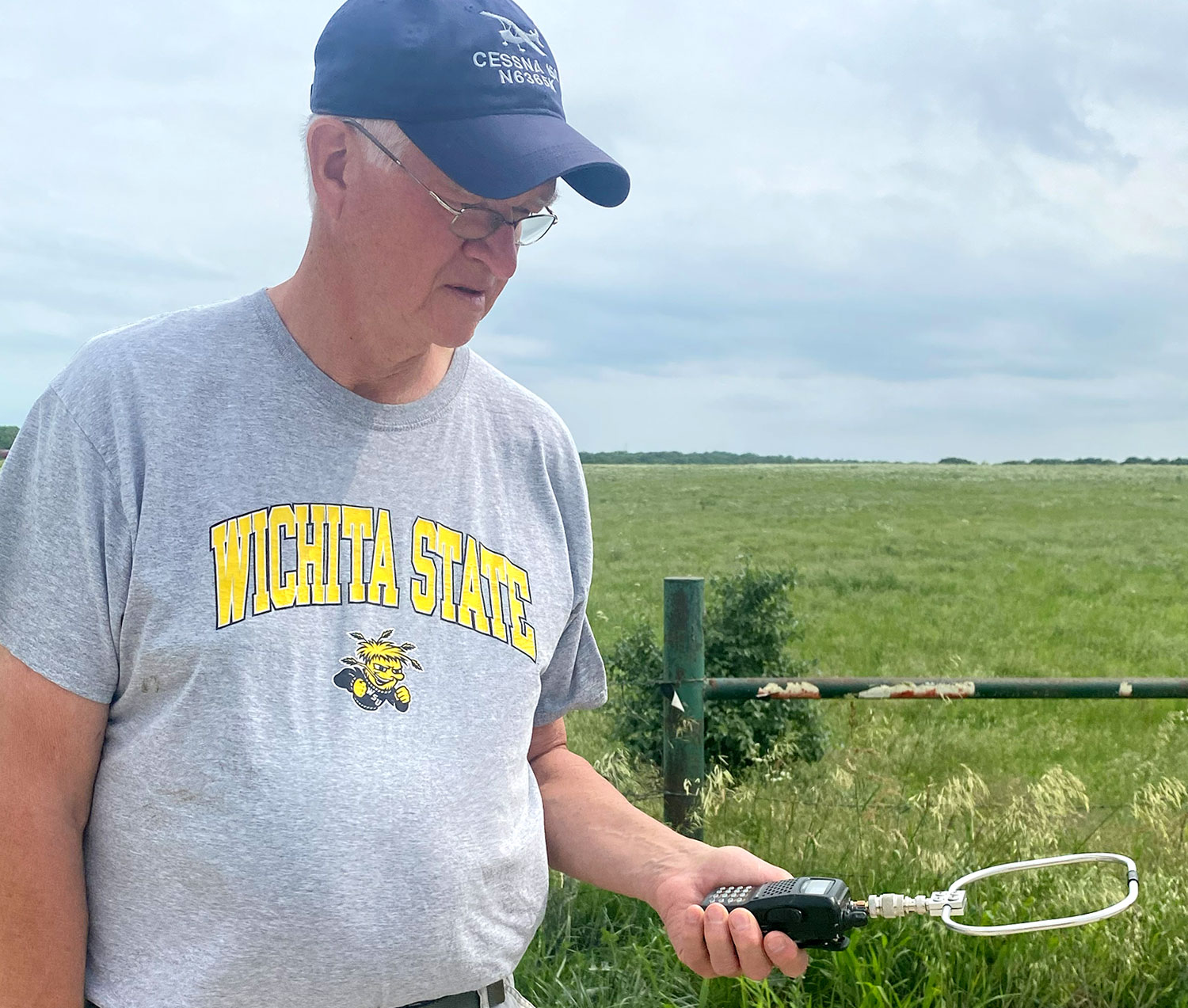
Wayne used a directional loop antenna on his HT and it was a good indicator to point to the heading of the signal. He also used his homemade Measuring Tape Fox Hunt Antenna which also showed the heading of the NOAA transmitter.
John suggested we go outside the city of Augusta limits (85th and Shumway) to high ground where we would not have reflectors of the signal. Also being on high ground our signal would not be affected by dead spots!
We took readings from multiple locations to determine if our techniques were accurate.
Taking the HT off the 162.500 frequency to 162.505 weakened the signal and allowed us to better determine the heading of the transmitter. Shifting frequencies +/-5kHz and +/-10kHz moves you down the deviation curve to drop the signal strength.
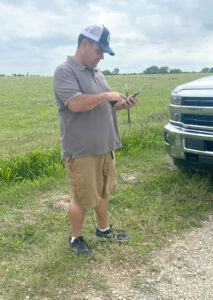 We noted an RF Attenuator that you could attach to your HT and antenna might help to weaken the signal allowing for better header detection. We tried the paper clip technique but it seemed to render a strong instead of a weakened signal!
We noted an RF Attenuator that you could attach to your HT and antenna might help to weaken the signal allowing for better header detection. We tried the paper clip technique but it seemed to render a strong instead of a weakened signal!
Lessons learned: know your radio, use a directional antenna (if you have one) to point while listening to the transmitter and s-meter, weak is strong, use an RF Attenuator if you have one, beware of reflections, be aware of the terrain and how that can block line-of-sight RF and shift your frequency.
